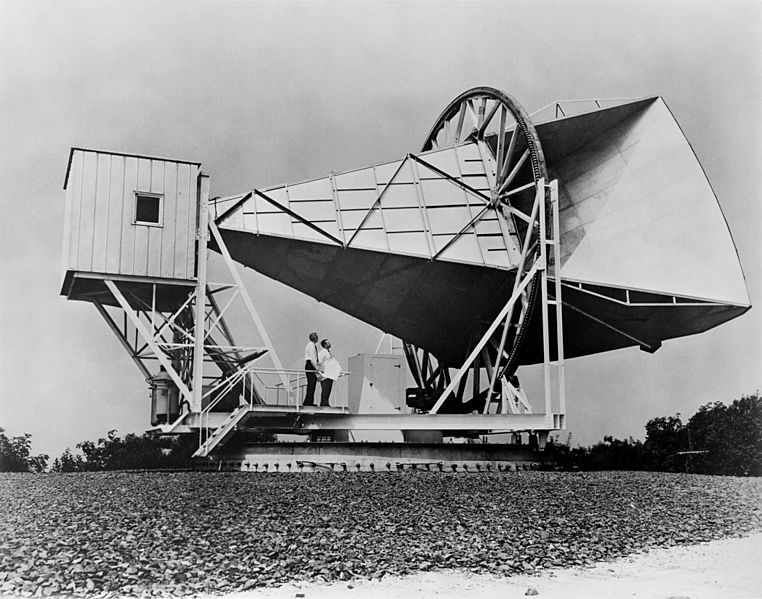Image: Horn Antenna-in Holmdel, New Jersey - restoration1

Description: The 15 meter Holmdel horn antenna at Bell Telephone Laboratories in Holmdel, New Jersey was built in 1959 for pioneering work in communication satellites for the NASA ECHO I. The antenna was 50 feet in length and the entire structure weighed about 18 tons. It was composed of aluminum with a steel base. It was used to detect radio waves that bounced off Project ECHO balloon satellites. The horn was later modified to work with the Telstar Communication Satellite frequencies as a receiver for broadcast signals from the satellite. In 1964, radio astronomers Robert Wilson and Arno Penzias discovered the cosmic microwave background radiation with it, for which they were awarded the 1978 Nobel prize in physics. In 1990 the horn was dedicated to the National Park Service as a National Historic Landmark.
Title: Horn Antenna-in Holmdel, New Jersey - restoration1
Credit: Original version at Flickr: NASA on The Commons This file was derived from: Horn Antenna-in Holmdel, New Jersey.jpeg
Author: NASA, restored by Bammesk
Permission: Public domainPublic domainfalsefalse This file is in the public domain in the United States because it was solely created by NASA. NASA copyright policy states that "NASA material is not protected by copyright unless noted". (See Template:PD-USGov, NASA copyright policy page or JPL Image Use Policy.) Warnings: Use of NASA logos, insignia and emblems is restricted per U.S. law 14 CFR 1221. The NASA website hosts a large number of images from the Soviet/Russian space agency, and other non-American space agencies. These are not necessarily in the public domain. Materials based on Hubble Space Telescope data may be copyrighted if they are not explicitly produced by the STScI.[1] See also Template:PD-Hubble and Template:Cc-Hubble. The SOHO (ESA & NASA) joint project implies that all materials created by its probe are copyrighted and require permission for commercial non-educational use. [2] Images featured on the Astronomy Picture of the Day (APOD) web site may be copyrighted. [3] The National Space Science Data Center (NSSDC) site has been known to host copyrighted content. Its photo gallery FAQ states that all of the images in the photo gallery are in the public domain "Unless otherwise noted."
Usage Terms: Public domain
License: Public domain
Attribution Required?: No
Image usage
The following 3 pages link to this image:

